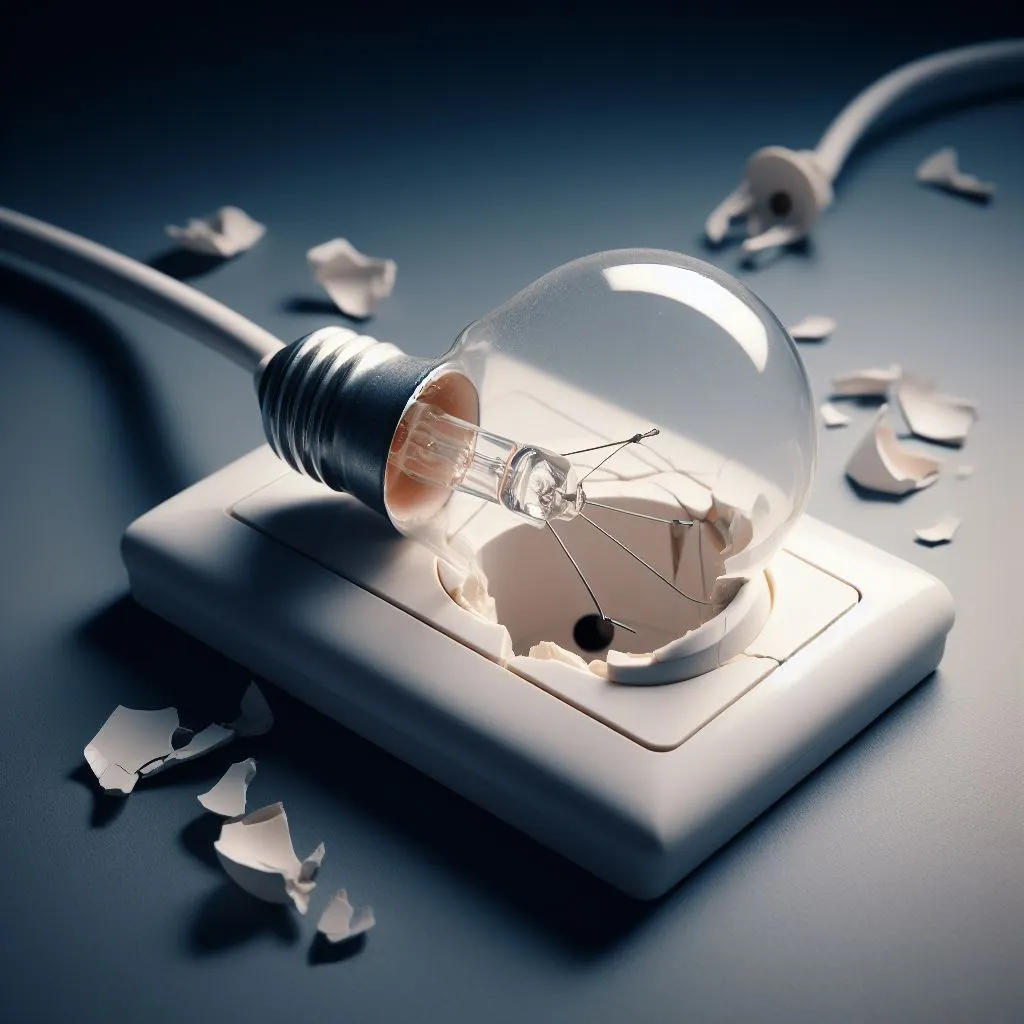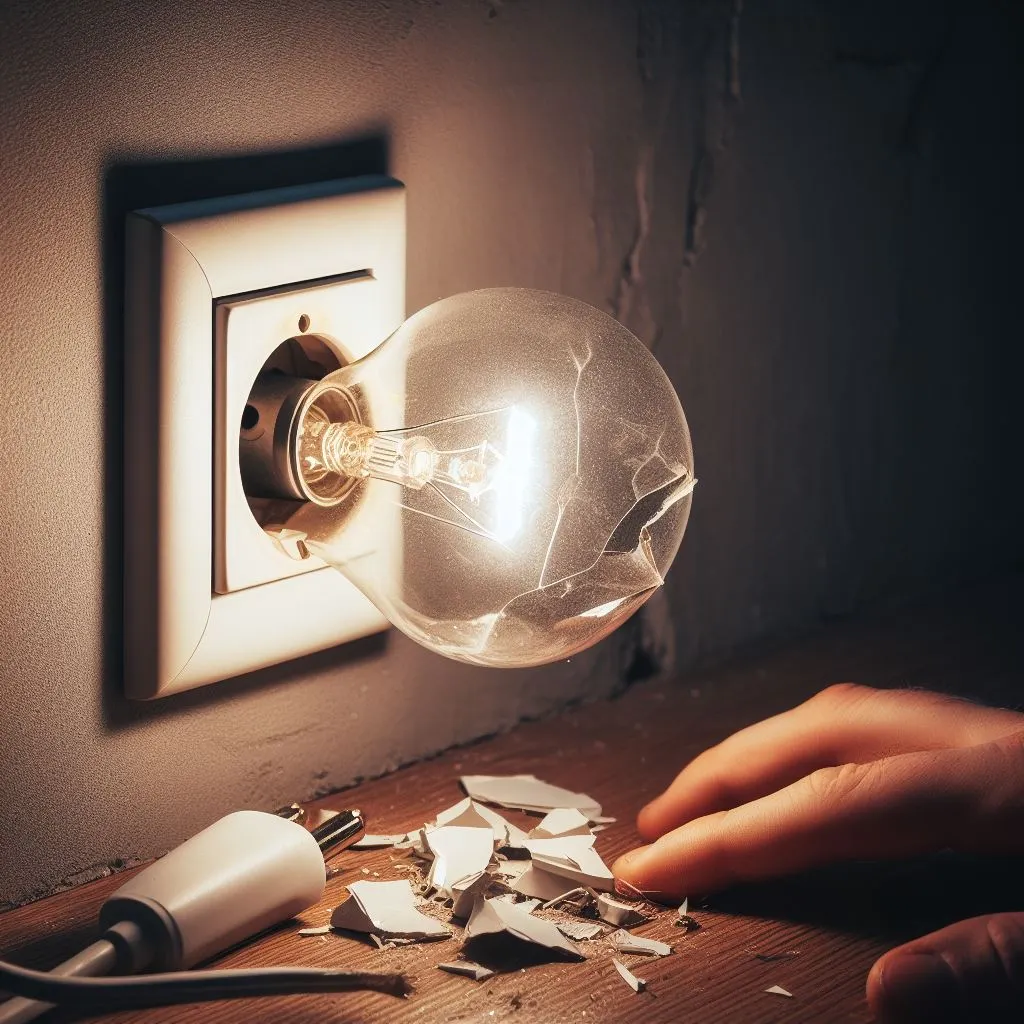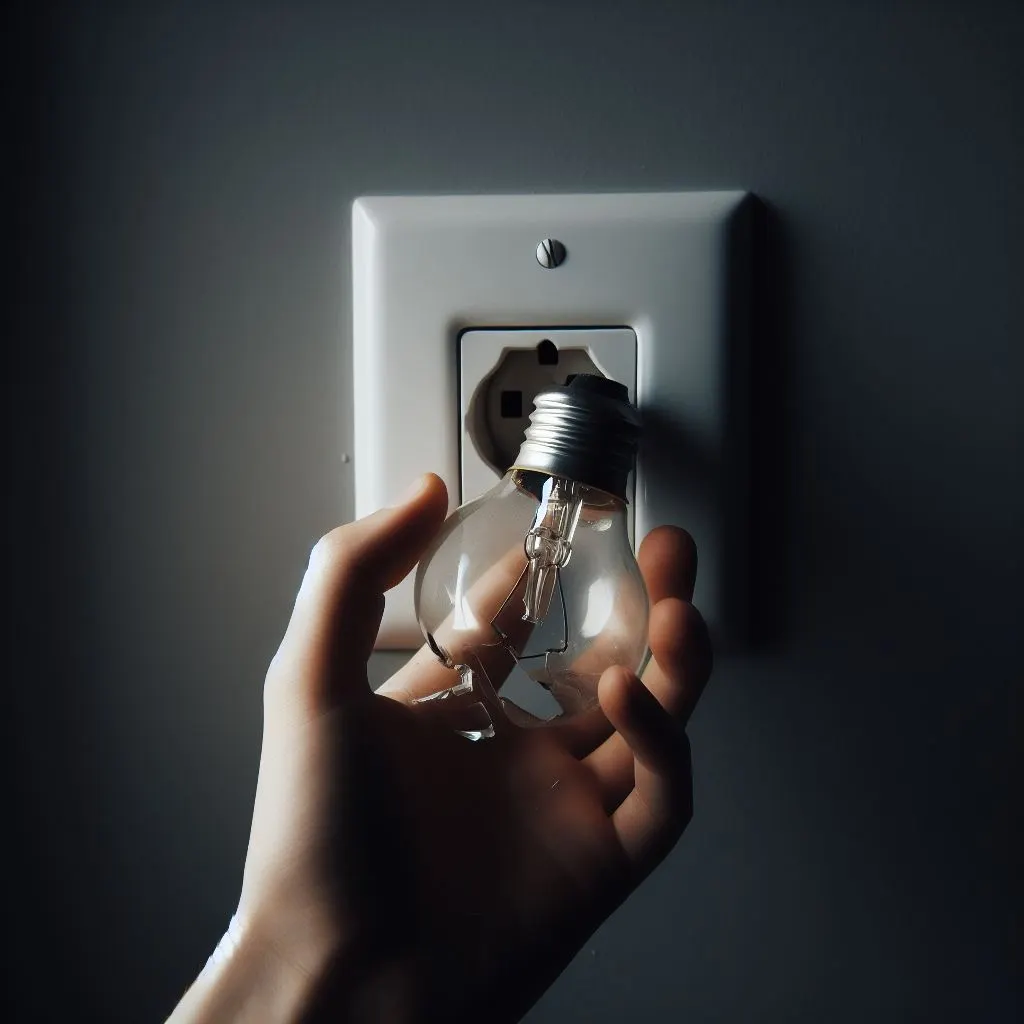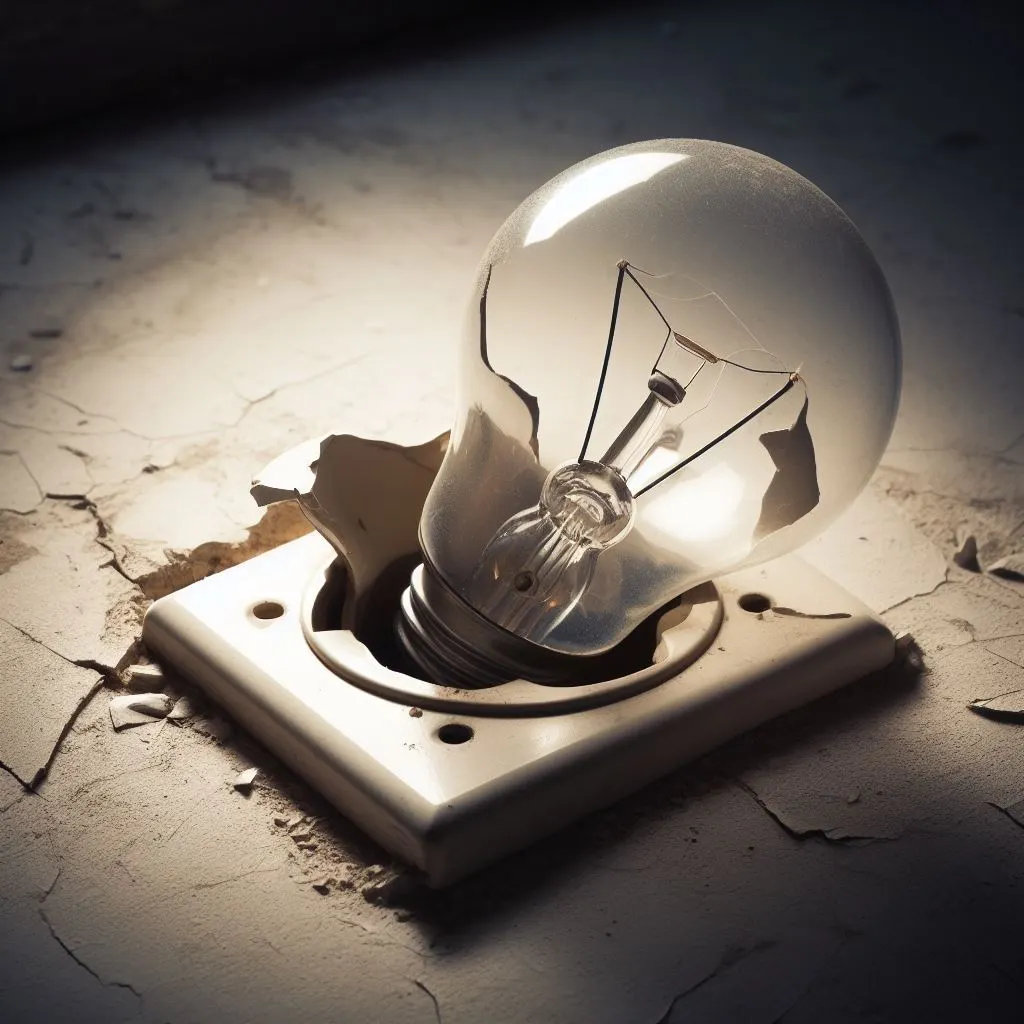Defining LED Bulbs
LED light bulbs are an energy-efficient and cost-effective alternative to traditional incandescent bulbs. LEDs, or light-emitting diodes, generate light by passing electricity through a semiconductor material, resulting in lower wattage usage and minimal heat output.
In addition to their energy-saving benefits, LED bulbs have a longer lifespan than incandescent bulbs, lasting up to around 25,000 hours.
Due to the low wattage and unique design of LED bulbs, installing them in specific sockets can be challenging.
If your LED Bulb Not Working in Socket, it is likely because the socket isn’t compatible with LED bulbs, or it may be a wiring issue.
In this guide, we will discuss why LED bulbs don’t work in specific sockets, provide troubleshooting tips, and discuss what sockets are compatible with LEDs.
Identifying Issues with LED Bulbs Not Working in Socket
When figuring out why an LED bulb won’t work in a socket, there can be a variety of causes. Here are some potential culprits and solutions for fixing them so your LED bulbs will work the next time you try.
Poor Socket Connections
If LEDs are not working in sockets, it could be due to poor connections. A common cause of poor connection is dust or dirt buildup in the socket.
First, turn off the power to clean it, then gently use a soft cloth or brush to remove the dirt and dust. Remember to be careful not to get any moisture in the socket, which could cause a short circuit.
Another possible cause of poor connections is loose wiring. A simple solution is to ensure all the wires are connected correctly and firmly.
Check both ends of the wires for any fraying or damage. Contact a licensed electrician for further inspection and advice if no issues are found here.
Read Also: Identifying & Solving Common Problems With LED Lighting
Compatibility Issues
If the problem is not due to poor connections, then it could be related to compatibility. Different types of bulbs may not be compatible with a socket, which can lead to the LED bulb not working.
To avoid this issue, always check the electrical characteristics of the socket and the LED bulb you plan to use. Additionally, many older sockets will not be compatible with LED bulbs, so consider upgrades in these cases.
Power Problems
Finally, specific power problems can prevent LED bulbs from working. This includes insufficient power supply, surges, or spikes in current or voltage.
In such cases, consider using a power conditioner or stabilizer to ensure a smooth power flow. Additionally, make sure that the wattage of the LED bulb is the same as the power rating of the socket.
By addressing these issues, you should be able to identify and fix the cause of your LED bulb not working in the socket. Be sure to consult a licensed electrician if the problem persists despite trying these solutions.
Understanding Why LEDs Fail to Work in Sockets
LED light bulbs offer a green alternative to traditional incandescent and fluorescent lighting. LED (light emitting diode) bulbs are quickly becoming one of the most popular choices for residential lighting because they are more energy-efficient and have a longer lifespan than other lighting options.
However, if you are experiencing difficulties getting an LED bulb to work in a specific socket, several causes could exist.
LEDs are different from other bulb types in requiring a driver board to regulate the current flowing through the bulb. Some sockets may not be compatible with the type of driver board used by the LED bulb, which can cause the LED bulb to not work.
It is essential to ensure that your socket is compatible with the LED bulb before attempting to install it.
Another cause of LED bulbs not working in a socket may be voltage incompatibility between the socket and the LED bulb. If the voltage supplied by the socket is too low or too high, the LED bulb will not work.
You should always ensure the socket can supply the exact voltage the LED bulb requires. If not, you may need to install a voltage converter to ensure the power supply is compatible.
Furthermore, it is possible that the LED bulb will not work in the socket due to poor connections. The LED bulb must be firmly attached to the socket to function correctly.
Loose connections or loose wiring can be a significant cause of LED bulbs not working, and it is essential to ensure that all connections are secure before attempting to use the LED bulb.
Read Also: Can LED lights Burn Out? Find out Here!
Troubleshooting Tips for LEDs Not Working in Socket
If an LED bulb does not work when placed in a socket, it is essential to check a few potential causes. This guide will provide some troubleshooting tips to help you identify and diagnose the issue with the LED bulb not working.
Check the Voltage
The voltage is usually the issue if the LED bulb does not work when placed in a socket. Before you replace the LED bulb, look inside the socket and see if the voltage displayed matches the one recommended by the manufacturer.
LED bulbs require a certain amount of voltage to function properly, so ensure the voltage in the socket is within the specified range. If the voltage is lower or too high, the LED bulb may not work.
Check the Connections
Another possible issue could be related to the connections. Make sure all the wires are connected correctly and securely. You can use a multimeter to determine whether or not the connections are working. Also, make sure that the wires are not damaged or corrupted.
Check the Socket
Sometimes, the issue can be with the socket itself. Check if the socket is clean and free of dirt and debris. If the socket has become corroded, this could be preventing the connection from getting established. Furthermore, make sure that the socket is not damaged or cracked in any way.
Check the Bulb’s Plug
If the LED bulb is still not working after checking the connections, the plug may be the issue. Inspect the bulb’s plug and ensure all the connecting pins are there and none are broken or bent. Replace the bulb if the pins are not making good contact with the socket.
Check the Bulb Itself
Finally, the LED bulb itself may need to be fixed. Take a closer look at the bulb, and you should be able to detect any physical signs of damage. If the LED bulb has any physical damage, it must be replaced. Otherwise, you will need to replace the bulb.
These are the troubleshooting tips for LEDs not working in sockets. With these tips, you should be able to identify the issue and find a suitable solution. With a little effort and patience, you should be able to get your LED bulb working quickly.
Read Also: Do LED Bulbs Leave an Unappealing Odor?
What Kinds of Sockets are Compatible with LEDs?
LED bulbs are designed to fit in regular sockets like traditional incandescent bulbs. However, LED bulbs may require specialized sockets to perform efficiently and effectively. Some LED lights may not work correctly if installed in a socket not designed for them.
Most LED lights are compatible with standard E27 medium screw-based sockets found in homes. However, some LED light bulbs require proprietary fixtures. It is essential to check the product specifications before purchasing the LED bulb to ensure it is compatible with the socket.
It is also important to note that some LEDs require more current than a typical socket can provide safely.
This may be indicated by the wattage rating of the LED, which should match the wattage rating of the socket. If this requirement is not met, the LED may fail to work in the socket or be damaged.
Lastly, some LED bulbs may not work with dimmer switches as they require more precise control than incandescent bulbs. If dimming your LED lights is desired, make sure to select a dimmable LED bulb and a compatible dimmer switch.
Benefits of LED Light Bulbs
LED bulbs have several advantages over traditional incandescent and fluorescent light bulbs. The most notable benefits are their energy efficiency, long life span, and low environmental impact.
Energy Efficiency
LED bulbs are about 90% more efficient than traditional incandescent bulbs. This means they use significantly less electricity to produce the same brightness, resulting in lower electricity bills.
LED bulbs also last much longer than incandescent and fluorescent bulbs, significantly lowering replacement costs.
Long Life Span
LED bulbs typically last between 25,000 and 50,000 hours, 5 to 10 times longer than traditional incandescent bulbs and up to 5 times longer than fluorescent bulbs. This means that compared to incandescent bulbs, LED bulbs will need to be replaced far less often.
Low Environmental Impact
LED bulbs are much more eco-friendly than incandescent and fluorescent bulbs, producing very little heat and requiring no hazardous materials during their manufacture.
Since LED bulbs use much less electricity than traditional bulbs, they emit significantly less carbon dioxide into the environment.
LED bulbs offer numerous benefits, such as energy efficiency, long life span, and a low environmental impact. Many people opt for LED bulbs due to their convenience and cost savings.
Read Also; Busting the Myth: Can LED Bulbs Explode?
How to Install an LED Bulb in a Socket
Installing an LED bulb into a socket is not a difficult task and with the proper instructions, anyone can do it. First off, you should make sure that your LED bulb is compatible with the socket type.
Different types of sockets, like standard screw-type sockets and candelabra sockets, require different types of LED bulbs.
Before you begin, you must be aware of all safety measures. Before handling any light bulb, make sure that you switch off the power.
LED bulbs contain sensitive electronics that could be damaged if electricity is still running. To avoid accidents, use gloves when handling the bulbs and their components.
The first step to installing an LED bulb is to prepare the socket. If there is an old light bulb in place, remove it safely and check for any dirt or dust buildup.
You might need to use a vacuum cleaner to remove any particles that could cause a short circuit or prevent the LED bulb from fitting correctly. Once this is done, unscrew the connector of the socket and discard it.
Next, find the end of the LED bulb’s connector and attach it to the socket. Ensure all pins are lined up correctly so the LED bulb can fit securely.
After this is completed, screw the connector tightly and seal it. Finally, test the LED bulb to ensure everything is connected correctly. Once the LED bulb turns on, you know you have successfully installed it!
And there you have it installing an LED bulb in a socket has never been so easy. With these simple steps, you can get the job done quickly and efficiently.
Common Problems Encountered with LEDs not Working in Socket
When installing LED bulbs in a socket, it is essential to be aware of common problems that may occur. Most of these stem from either compatibility or power issues.
Below are some of the most common problems people may encounter when trying to get an LED bulb working in a socket.
- Incompatible Bulb: Not all LED bulbs are compatible with sockets. It is essential to check the compatibility between the LED bulb and the socket before installing it.
- Incorrect Socket: Some LED bulbs may require a specific type of socket. Ensuring you have the correct type of socket for the LED bulb is essential.
- Loose Connections: If the connections between the LED bulb and the socket are not secure, the bulb may not work correctly. It is essential to make sure the connections are tight.
- Insufficient Power: LEDs require a certain amount of power to operate. The LED bulb will only work correctly if the socket provides enough power.
- Un-rated Voltage: Some LED bulbs require a specific voltage input to operate correctly. It is essential to ensure the socket’s voltage output matches the LED bulb’s rated voltage.
- Dimmer Switches: LEDs may not work correctly with dimmer switches. Ensuring the LED bulb is rated to work with dimmer switches is essential.
- Obstructions: If an obstruction blocks the LED bulb’s light, the bulb may not work correctly. It is essential to make sure the LED bulb is clear of obstructions.
Awareness of the common problems that may occur when attempting to get an LED bulb working in a socket can help ensure the installation is successful.
It is also essential to read the manufacturer’s instructions before installing the LED bulb. Following these steps can help ensure the LED bulb works correctly.
Read Also: Glowing Reviews: 15 Best Light Bulbs For Exposed Fixtures
Considerations for Purchasing LED Bulbs
When purchasing LED bulbs, there are a few things to consider to maximize your purchase. While LEDs are generally more cost-effective and longer-lasting than traditional incandescent bulbs, it’s essential to make sure that you select the right option for your needs. Here are some tips for picking an LED bulb that will work best for you:
- Consider the wattage of the LED bulb you’re purchasing compared to the traditional incandescent bulb you’re replacing. LEDs typically use less energy but can produce the same light as a traditional incandescent bulb. A good rule of thumb is that a 15-watt LED bulb will be roughly equivalent to a 60-watt traditional incandescent bulb.
- Look for bulbs that carry the Energy Star label. This means the energy-efficient bulb has been tested and certified by the Environmental Protection Agency (EPA) and the Department of Energy (DOE).
- Make sure the bulb is compatible with the socket in which you’re installing it. Some sockets can handle various bulb types, while others are limited to particular bulbs only. Be sure to check before you buy!
- Choose an LED bulb with a color temperature of 3000K or lower if you prefer a warm, cozy, and inviting feel in your home. Look for bulbs with a color temperature of 5000K or higher for a bright and vibrant atmosphere.
- Remember to factor in the bulb’s lifespan when purchasing. LEDs typically have much longer lifespans than traditional incandescent bulbs, up to 25,000 hours or more compared to 1,500 hours for a conventional bulb.
Considering these points when purchasing an LED bulb, you might be pleasantly surprised at the cost savings and convenience that LED bulbs can bring to your home over time.
Fair Market Prices for LED Bulbs
LED bulbs have become increasingly popular due to their energy efficiency and long lifespan. If you want to buy LED bulbs, knowing what a fair market price is for them is essential.
The cost of LED bulbs will vary depending on the bulb type and the wattage. Generally speaking, LED bulbs range in price from $1-$30, with higher-priced bulbs being more energy efficient and having a longer life span.
Shopping around for the best possible price for an LED bulb is essential. Many retailers have sales and discounts on LED bulbs, so it pays to be mindful of these when purchasing.
Read Also: Glowing Reviews: 15 Best Light Bulbs For Exposed Fixtures
Additionally, many stores offer recycling programs for old light bulbs often with discounts for drop-offs.
When it comes to LED bulbs, the quality is essential. A cheaply made LED bulb may have a different lifespan and wattage than a more expensive one.
Some LED bulbs are also designed to work in specific sockets, such as GU10 or MR16 bulbs. It’s worth taking the time to read the product description before purchasing.
Finally, always consider the environmental impact of your purchase. LED bulbs are far more energy efficient than traditional ones, reducing your carbon footprint.
In conclusion, understanding the fair market price of LED bulbs is essential to make a wise purchase. Be sure to shop around, consider the quality of the product, and think about the environmental impact of the product before making a final decision.
Conclusion
LED light bulbs are an efficient and cost-effective lighting solution, but they can come with their own unique set of problems. Knowing the common issues and how to troubleshoot them is essential to ensure you get the most out of your LED light bulbs.
Before buying, make sure you understand the different types of sockets compatible with LED bulbs as well as the current fair market prices. With the correct information and careful decision-making, you can confidently enjoy the benefits of LED bulbs in your home or office.
LED bulbs require some maintenance before and after installation to ensure optimal performance. If you are having trouble with your LEDs not working in a socket, investigate the potential causes and possible solutions before giving up. With the right approach, you should be able to get your LED lights working correctly.
Resources
Plenty of resources are available to help you find the right LED bulb. Research online, ask family and friends who have experience with LED lights, and talk to others in the community who may have helpful information.
The Internet provides access to many online stores specializing in LED bulbs and can advise on choosing the best product for your needs. Additionally, online reviews from buyers can also be beneficial when narrowing down a selection.
Hardware stores often offer an extensive selection of LED bulbs and can provide helpful information about the type of bulb you need and how to install it. If you have difficulty understanding technical information, staff members can explain it more easily.
Finally, consult the manual or instructions that come with your LED bulb. This should contain important information such as the wattage, voltage, color temperature, and installation directions.
FAQs About LED Bulbs Not Working in Socket
What are LED bulbs?
LED bulbs are light-emitting diode (LED) lamps that use semiconductor technology to illuminate. They last longer and use less energy than other traditional forms of lighting.
What causes LED bulbs not to work in a socket?
There are several potential causes for LEDs not working in a socket, including improper installation, incompatibility with the socket type, voltage rating not matching, and defective components.
How can I troubleshoot LED bulbs that aren’t working in a socket?
Troubleshooting for LEDs that aren’t working in a socket includes:
- Check to make sure the bulb and socket type are compatible.
- Make sure the socket is wired correctly.
- Checking the circuit breaker for the socket.
- Testing the LED with a multimeter.
What kind of sockets are compatible with LEDs?
E27 (Edison screw) and E26 (U.S. standard) are the most common LED socket types.
What are the benefits of LED bulbs?
LED bulbs provide several benefits compared to traditional bulbs, such as a long service life, improved energy efficiency, and improved light quality.
How do I install an LED bulb in a socket?
Installing an LED bulb in a socket requires safety precautions, like switching off the main power supply, keeping away from heat sources, and wearing gloves. After these details are taken care of, you can unscrew the existing lamp, install the LED bulb and cover, connect the necessary wires, and switch on the power supply.
What should I consider before purchasing LED bulbs?
Before purchasing LED bulbs, consider factors such as lumens per watt, color temperature, dimming compatibility, insulation rating, length of warranty, and price.





2 thoughts on “Fix LED Bulb Not Working in Socket – Find Causes”